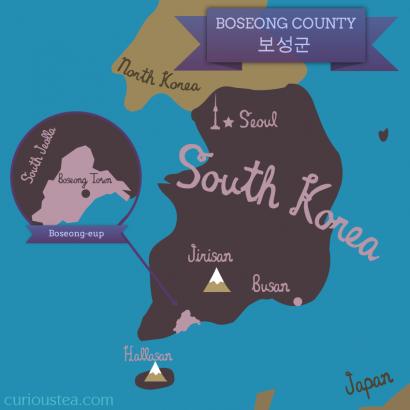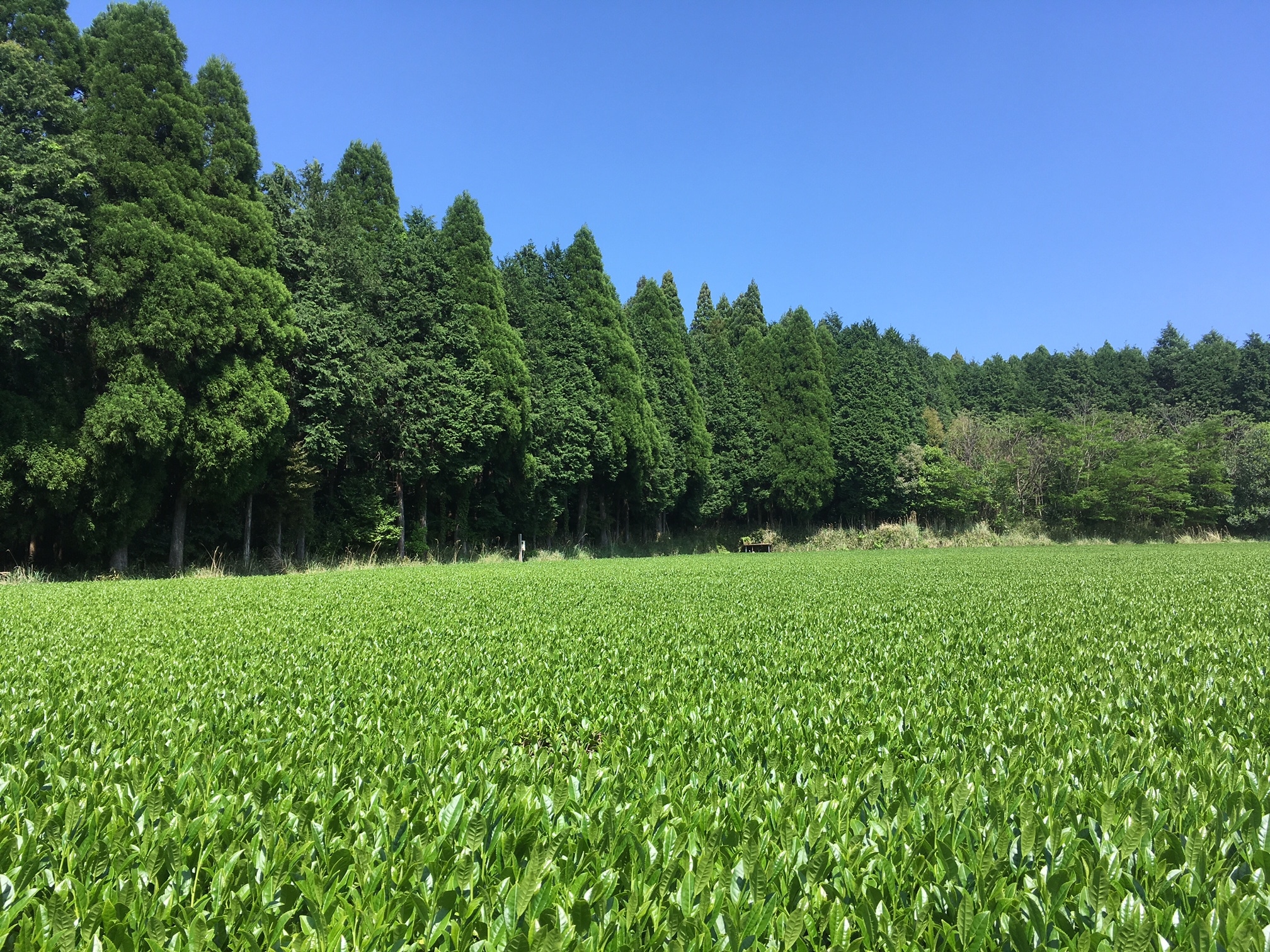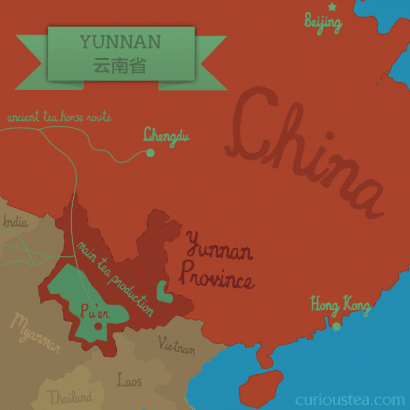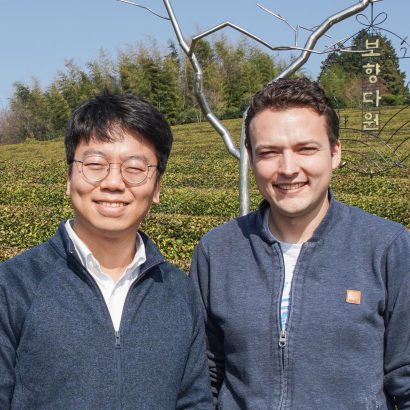Welcome to the September 2023 edition of the Curious Tea subscription! Here’s a closer look at the four exciting new teas that we are sharing with our subscribers this month.
The first light tea this month is a classic Sencha from an organic plantation in Kirishima in Japan. The second light tea comes from another organic plantation, this time in Boseong in South Korea; it delivers a refreshing spring character.
For the dark side of the selection we have a spring black tea from the same plantation in Boseong, also crafted in spring. Finally the last tea to be featured is a classic Dian Hong from Yunnan that is made to the classic recipe that was developed in 1938.
Our Discovery subscription boxes contain 10g taster pouches of all of the above mentioned teas. If you are a subscriber you will benefit from a 10% discount on all teas from our tea shop!
Let’s get into further detail on these teas featured in our September tea subscription boxes.
Boseong Sejak Nokcha
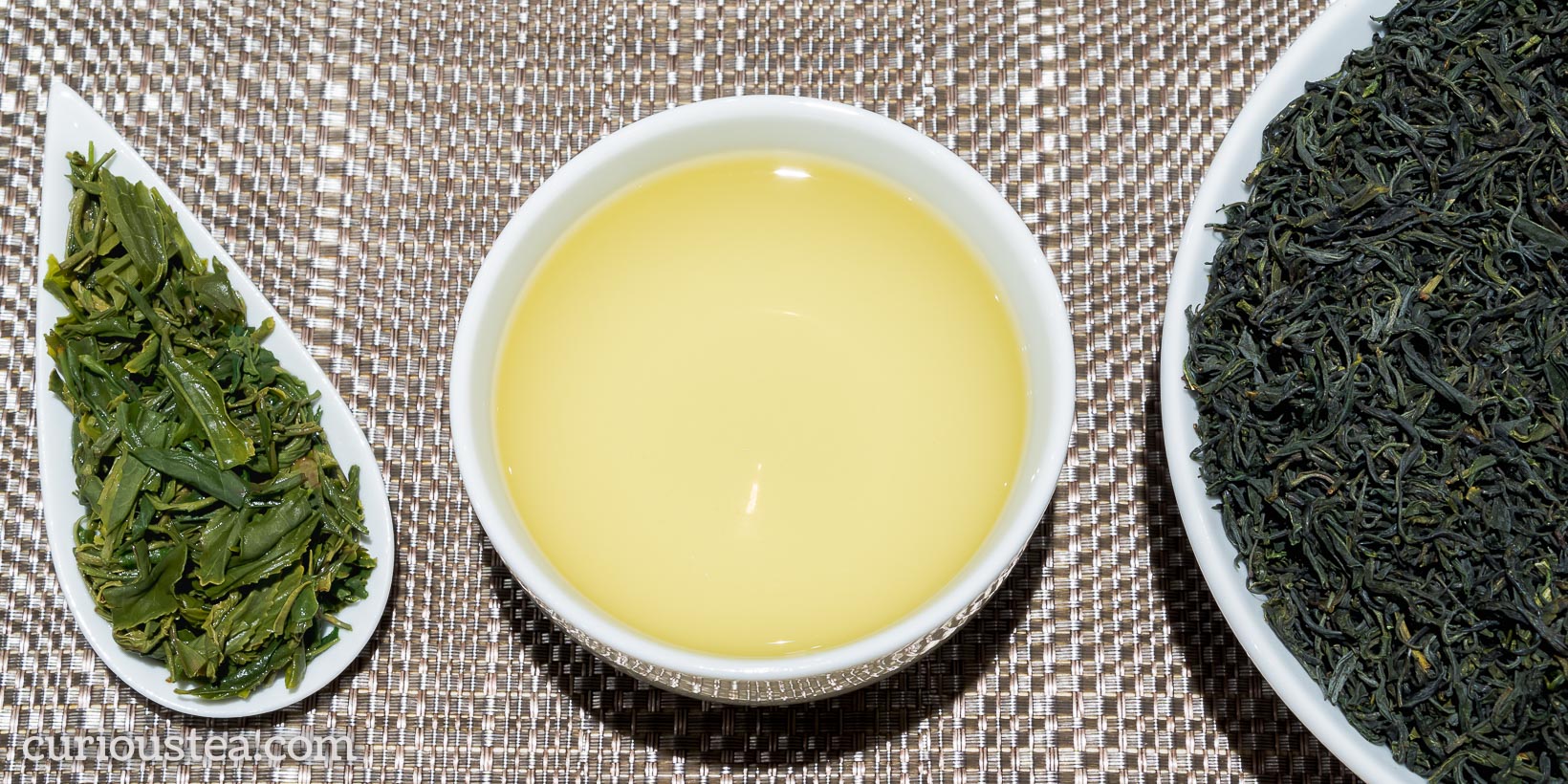
Boseong Sejak Nokcha (보성군 세작 녹차) is an organic green tea from the Choi family plantation located in the famous Boseong County of South Jeolla Province. The spring Sejak (세작) grade is plucked in late April and is the second flush after the rare and expensive Ujeon (우전) grade. The name Sejak Nokcha refers both to the flush of this tea and the fact that it is a green tea, or nokcha (녹차). This tea has full organic certification, was picked in April 2021 and is sourced by us directly from the Choi family.
The Choi family plantation produces some classic teas that all have their own unique characters but maintain a distinctive ‘Korean’ taste. The family has owned this plantation for 3 generations and the tea making knowledge passes down from one generation to the next. They take great care in growing and producing their organic teas that showcase wonderful traditional Korean tea flavours. The Choi family also runs tea making workshops for local schools, passing down their tea knowledge and promoting local agricultural work. Most children of farmers around the area are keen on moving to big cities for study and work, so their work is essential in ensuring the future of Korean tea.
Korean teas are distinguished by having a clear classification system of flushes. The first flush Ujeon (우전) is the most prized one, which is the ‘pre-rain’ picking of the tea leaves. This is followed by Sejak (세작) ‘thin sparrow’, Jungjak (중작) ‘medium sparrow’ and Daejak (대작) ‘big sparrow’ flushes. These names refer to the shape and size of the leaves and their resemblance to sparrow tongues. Finally the Yeopcha (엽차) grade is the last picking of the season representing a coarse grade that is suitable for everyday drinking. The earlier the harvest, the more expensive the tea is. Earlier harvests also have more intense characteristics and heavily feature dominant green, savoury and umami flavours.
This Boseong Sejak Nokcha is from the second Sejak flush and is processed as a green tea. Unlike the earlier Ujeon harvest that is pan-fried in order to stop the oxidations process, this Nokcha undergoes steaming. This method of halting oxidation is more prevalent in Japan and it produces green teas that have bold profiles and flavours that have strong savoury and umami flavours. Steaming does happen to be a very popular processing methodology in Korea as well.

This Boseong Sejak Nokcha has wiry dark green leaves. It produces a grassy liquor that has a refreshing floral aspect to it. The flavours are predominantly grassy and savoury yet sweet with notes of nori seaweed. There is slight dryness present on the lasting aftertaste that is not at all distracting as it is balanced by some sweet notes. Overall this is a very clean and refreshing cup that still produces complex flavours.
It is best brewed at 70c for 2-3 minutes and can be re-brewed multiple times.
You may be interested in other teas we currently offer from the Choi Family Garden. You can also buy this Boseong Sejak Nokcha green tea in our online shop.
Kirishima Sencha
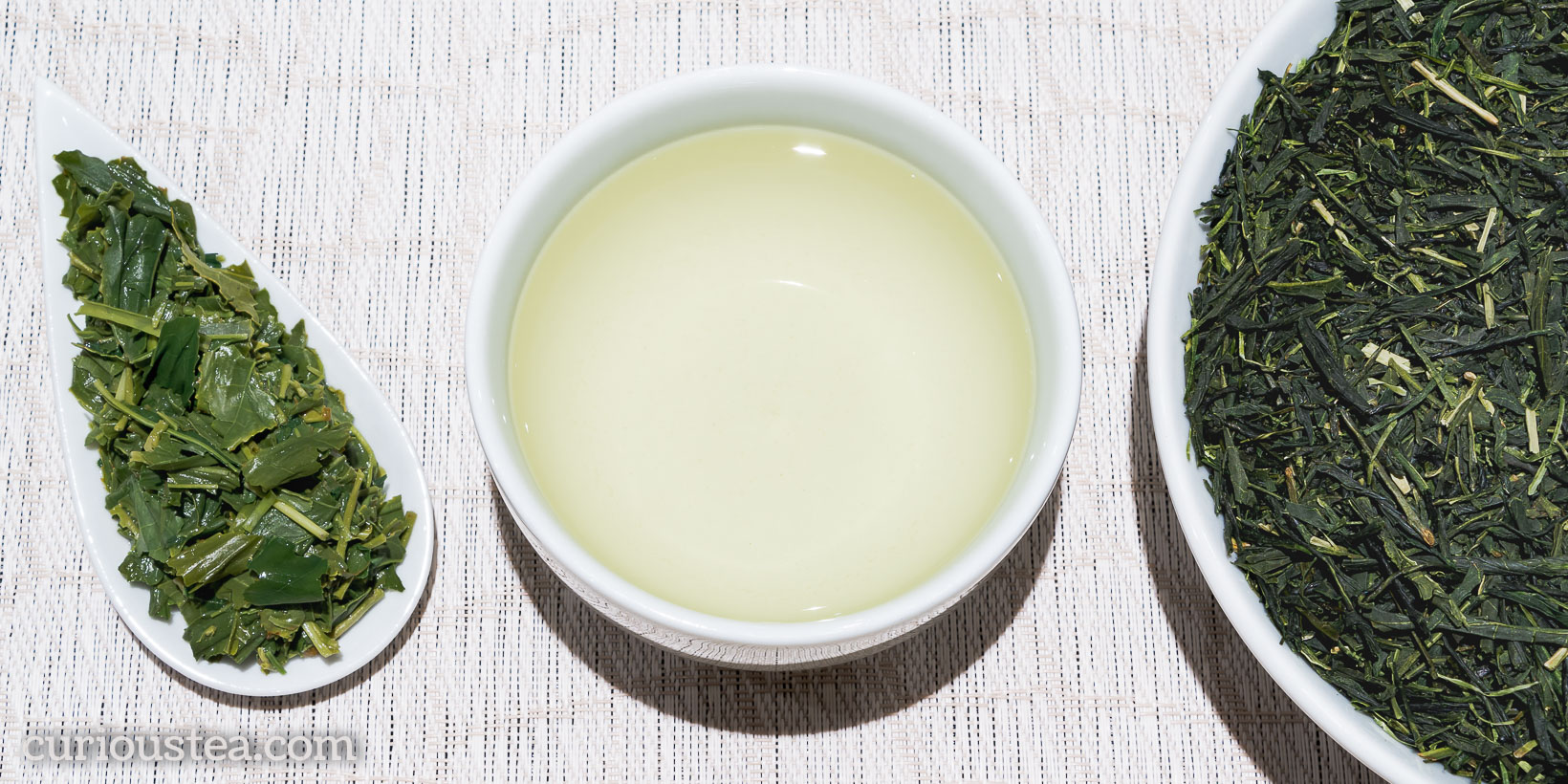
Kirishima Sencha (霧島煎茶) is a classic Japanese green tea that is grown in Kirishima, Kagoshima Prefecture. Made from Yabukita (やぶきた) cultivar plants, it produces a grassy liquor with smooth vegetal flavours and slight savoury edge. This tea is grown at an organic plantation that has full organic certification by the Japanese Ministry of Agriculture, Forestry and Fisheries. We source this tea directly from the owner of the plantation. He is the owner of a small family-run business based in Shizuoka and Tokyo with over 60 years of history. They own small plantations in Kagoshima, Aichi and Kyoto Prefectures where they produce organic and traditional Japanese green teas. This particular tea comes from their small organic plantation in Kirishima and it was picked and processed in May 2023.
The organic plantation that this tea comes from is located in the foothills of Mount Kirishima in Kagoshima Prefecture, Kyūshū. It is grown at an altitude of around 400m above sea level. As Kyūshū is the most southwesterly island of the Japanese four main islands, it enjoys a rather mild climate. But it can still get cold in the highlands, which are covered in snow in the winter months. The seasonality of the region requires frost hardy cultivars to be used, which tend to grow leaves slower, resulting in more flavoursome teas.
Location of the organic tea garden in Kirishima, Kagoshima Prefecture, Japan:
This Kirishima Sencha is made from the leaves of Yabukita cultivar plants. This cultivar is the most popular and widespread tea plant in Japan and Yabukita plants cover about 75% of Japanese tea fields. It was developed by a tea breeder from Shizuoka in the early 1900’s called Hikosaburo Sugiyama, but it was officially registered only in 1956. The well-performing Yabukita plants quickly proved popular due to their hardiness, ease of cultivation and tea flavours; with time becoming the mainstay of Japanese green tea production. One of the main factors for the popularity of the Yabukita cultivar has been the flavours that they are known for. These plants produce teas with typical savoury and umami grassy flavours and strong aromas that are particularly sought after in Japanese green teas.
When brewed, Kirishima Sencha produces a bright emerald green liquor with a light grassy and slightly nutty aroma. The overall grassy profile has a smooth vegetal flavour with sweet buttery notes. The overall level of astringency is low but there is a hint of nori seaweed and a mild umami flavour, which leads into a long aftertaste with a savoury edge. The overall smooth flavour leaves a lasting, yet refreshing impression.
It is best brewed at 80°C for 1-2 minutes and can be brewed 2+ times depending on your taste preferences. Kirishima Sencha is quite a versatile tea and the flavour can be easily adapted to suit the drinker’s preferences by changing the water temperature. Lower water temperatures will result in a more mellow and sweet tasting liquor. If you prefer a stronger flavour, you can experiment with slowly increasing the water temperature used to brew it.
You can also buy this Kirishima Sencha green tea in our online shop.
Dian Hong Feng Qing Classic 1938
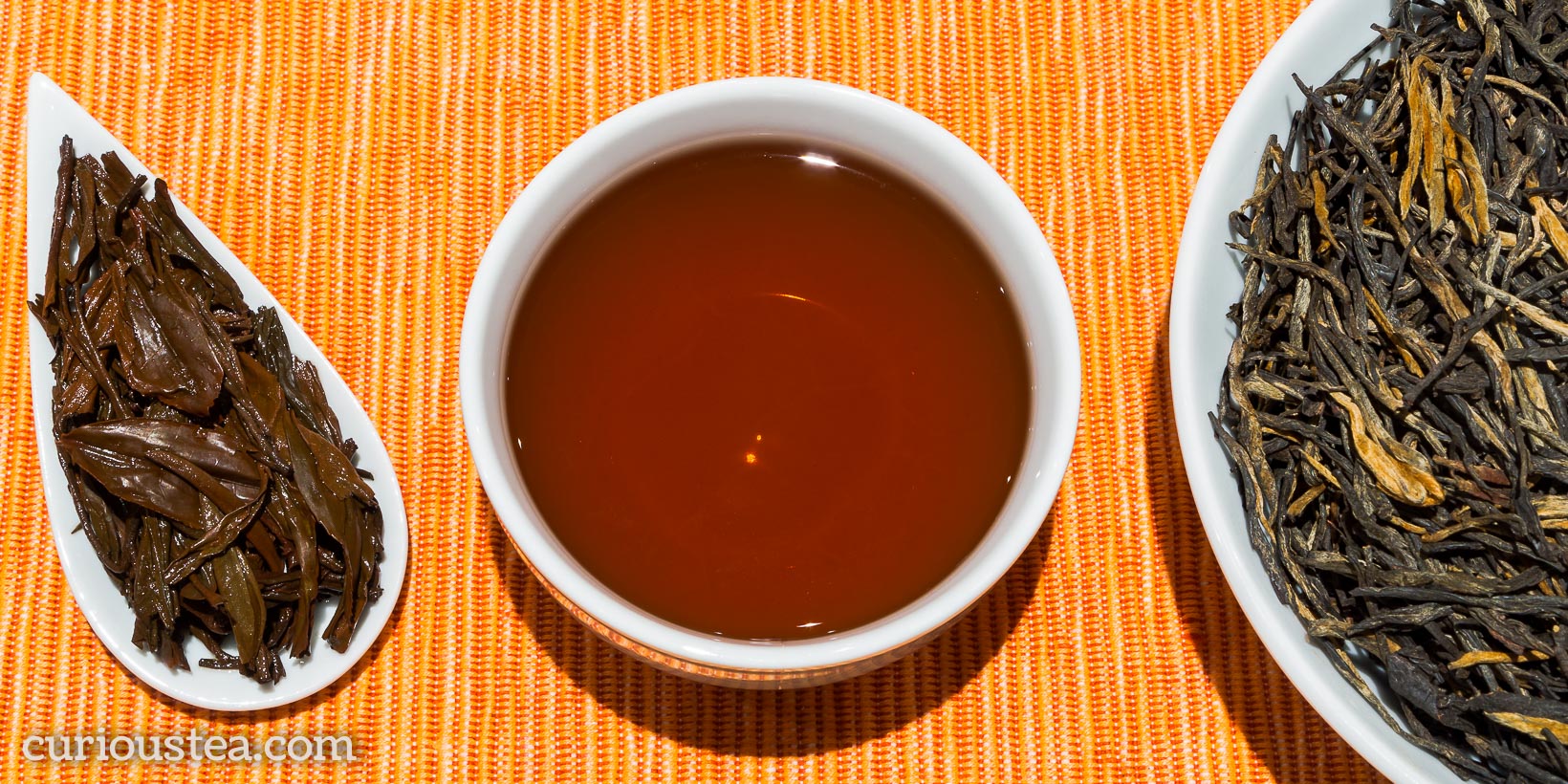
Dian Hong Feng Qing Classic 1938 (滇红凤庆) is a great example of a smooth Chinese black tea from Fengqing County located in Lincang Prefecture of Yunnan Province. This tea is made by closely following the original recipe created around 1938 that marked the inception of the Yunnan black tea industry. Made exclusively from large leaves of local Fengqing assamica plants, it displays a classic Dian Hong profile that has a fine balance between sweet malty and tangy mineral notes. This current batch is from 29 March 2021 harvest.
Yunnan Province produces some great Dian Hong (滇红), or Yunnan Red (red according to Chinese classification) teas. These are very popular due to their flavour profile, having smooth balanced flavours with plenty of full-bodied sweet malty notes as well as general lack of astringency or bitterness. The low level of tannins is attributed both to production methods as well as the actual raw material used for these teas. The native plant to Yunnan Province is the assamica plant, locally known as Yunnan Da Ye Large Leaf (雲南大叶). These plants have larger leaves than their sinensis cousins and are largely used for pu-erh tea production in the region. When used for black tea production, like for this Dian Hong Feng Qing Classic 1938, they also deliver great results, having the usual Dian Hong sweet malty flavours that are nicely balanced by some tangy mineral notes.
Black tea production started in Yunnan quite recently, the year commonly given being 1938. Historically, this was preceded by the Japanese invasion of China. As the Chinese forces led by Chiang Kai Shek were forced to abandon coastal territories to the Japanese invaders, they had to relocate many of the industries further inland, with many industries being re-established in Sichuan Province. As the occupied territories were also important tea producing regions, a decision was made to start production of black tea in Yunnan Province. Tea was seen as a major export and an opportunity to fund the resistance efforts. The existence of the Burma Road allowed for these exports to leave the country. An experimental station was established and the first black teas were produced in Fengqing County. Although initial output was very small, the tea was judged very highly. In time, black tea production spread throughout Yunnan Province. The rise in popularity was largely attributed to the balanced and smooth flavours of Yunnan Red – full-bodied sweet maltiness without any of the astringency of other black teas.
This Dian Hong Feng Qing Classic 1938 black tea consists of long large leaves with an attractive golden colours on the buds. The liquor produced has a dark red colour and a lovely comforting malty aroma. The overall sweet malty profile has a nice counterbalance by way of more tangy fruity notes. There are also mineral and stony notes, attributed to the Large Leaf assamica plants. The afttertaste is lasting, with a touch of floral dryness and rose notes. This is a nicely balanced tea and is not as sweet as some other Dian Hong teas can get.
It is best brewed at 90°C for 2-3 minutes according to your taste, brewing multiple times.
You can also buy this Dian Hong Feng Qing Classic 1938 black tea in our online shop.
Boseong Sejak Hongcha
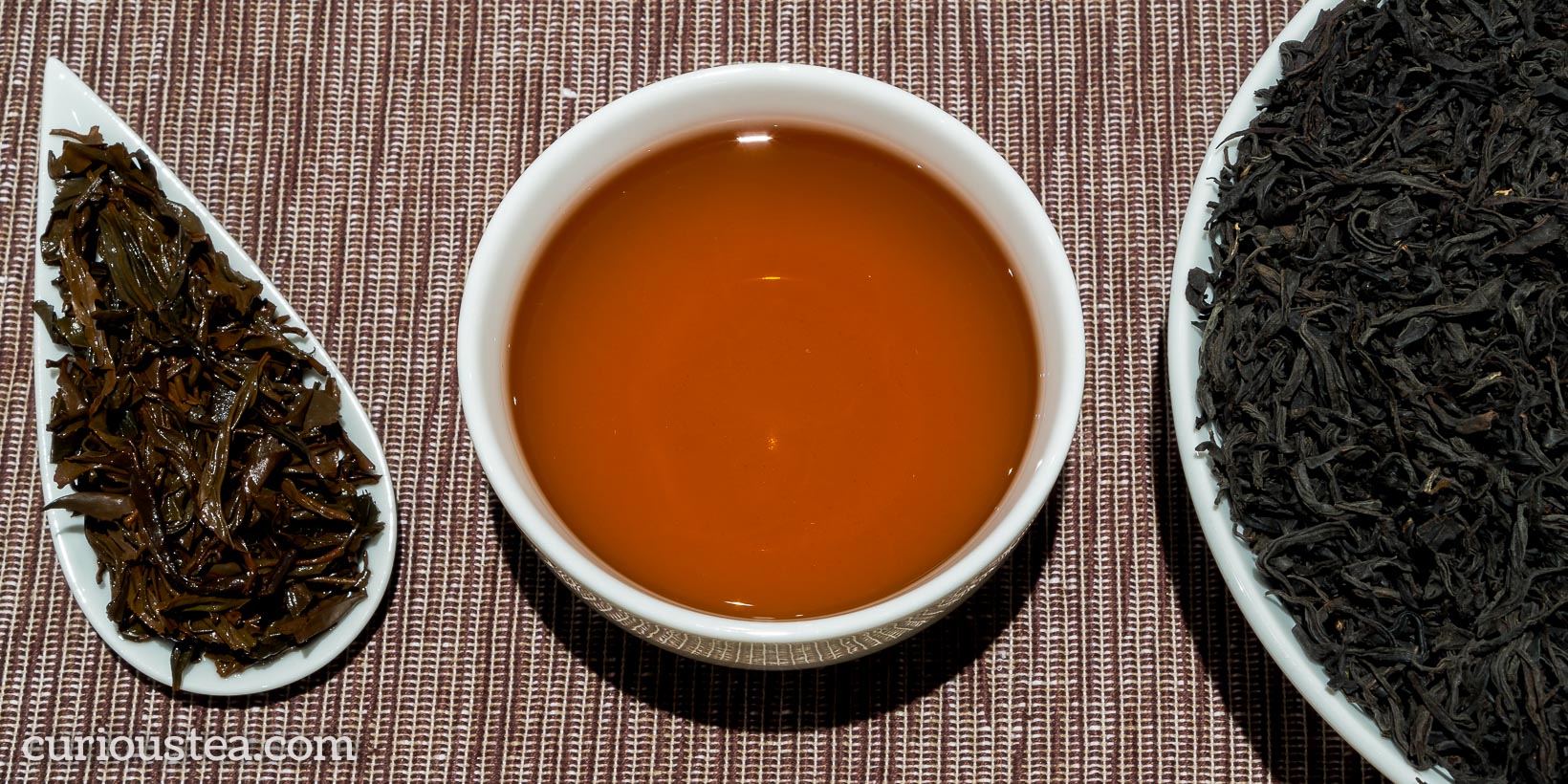
Boseong Sejak Hongcha (보성군 세작 홍차) is an organic black tea from the Choi family plantation located in the famous Boseong County of South Jeolla Province. The spring Sejak (세작) grade is plucked in April and is the second flush after the rare and expensive Ujeon (우전) grade. The name Sejak Hongcha refers both to the flush of this tea and the fact that it is a black tea, or hongcha (홍차). This tea has full organic certification, was picked in April 2021 and is sourced by us directly from the Choi family.
The Choi family plantation produces some classic teas that all have their own unique characters but maintain a distinctive ‘Korean’ taste. The family has owned this plantation for 3 generations and the tea making knowledge passes down from one generation to the next. They take great care in growing and producing their organic teas that showcase wonderful traditional Korean tea flavours. The Choi family also run tea making workshops for local schools, passing down their tea knowledge and promoting local agricultural work. Most children of farmers around the area are keen on moving to big cities for study and work, so their work is essential in ensuring the future of Korean tea.
Korean teas are distinguished by having a clear classification system of flushes. The first flush Ujeon (우전) is the most prized one, which is the ‘pre-rain’ picking of the tea leaves. This is followed by Sejak (세작) ‘thin sparrow’, Jungjak (중작) ‘medium sparrow’ and Daejak (대작) ‘big sparrow’ flushes. These names refer to the shape and size of the leaves and their resemblance to sparrow tongues. Finally the Yeopcha (엽차) grade is the last picking of the season representing a coarse grade that is suitable for everyday drinking. The earlier the harvest, the more expensive the tea is. Earlier harvests also have more intense characteristics and heavily feature dominant green, savoury and umami flavours. While these flavours are more evident in green teas, they also do translate rather well to their black tea counterparts.
This Boseong Sejak Hongcha is from the second Sejak flush and is processed as a black tea by allowing the tea leaves to oxidise. Traditionally oxidation levels in Korean black teas tend to be rather light, something you can easily see in this tea as well. The lighter oxidation results in a lighter profile that is cleaner and more refreshing.
This Boseong Sejak Hongcha has wiry dark leaves that produce a dark amber liquor with a light aroma. The taste is soft, smooth and clean. There is no astringency, bitterness or maltiness in this tea. Instead there are light stony and woody notes. There are further notes of dried fruits that lead on to a crisp and tangy aftertaste. Overall this is a very fresh and clean tasting tea that represents a great showcase of the lighter style of black tea popular in Korea.
It is best brewed at 90c for around 3 minutes and can be re-brewed multiple times.
You can also buy this Boseong Sejak Hongcha black tea in our online shop. You may be interested in other teas we currently offer from the Choi Family Garden.
We really do hope that you enjoy this tea selection and are looking forward to the selection in our October box. It will be a focus on some of the novel teas we discovered during our recent trip to Japan. This includes two types of oolong, a GABA Wakocha black tea and a highly unusual, koji fermented type of dark tea!
If reading this has made you curious about our teas, but you don’t yet subscribe to a monthly tea selection, you can sign up for our tea boxes in just a few clicks. We ship worldwide from London, UK.
We always love to hear from you, so if you have any questions, suggestions or just want to chat about tea, email us at contact@curioustea.com, via our Facebook page or via Twitter.

